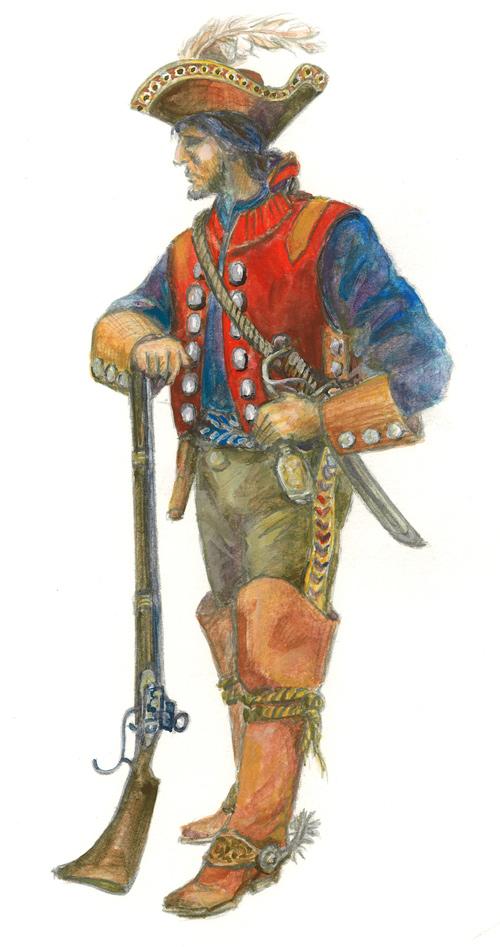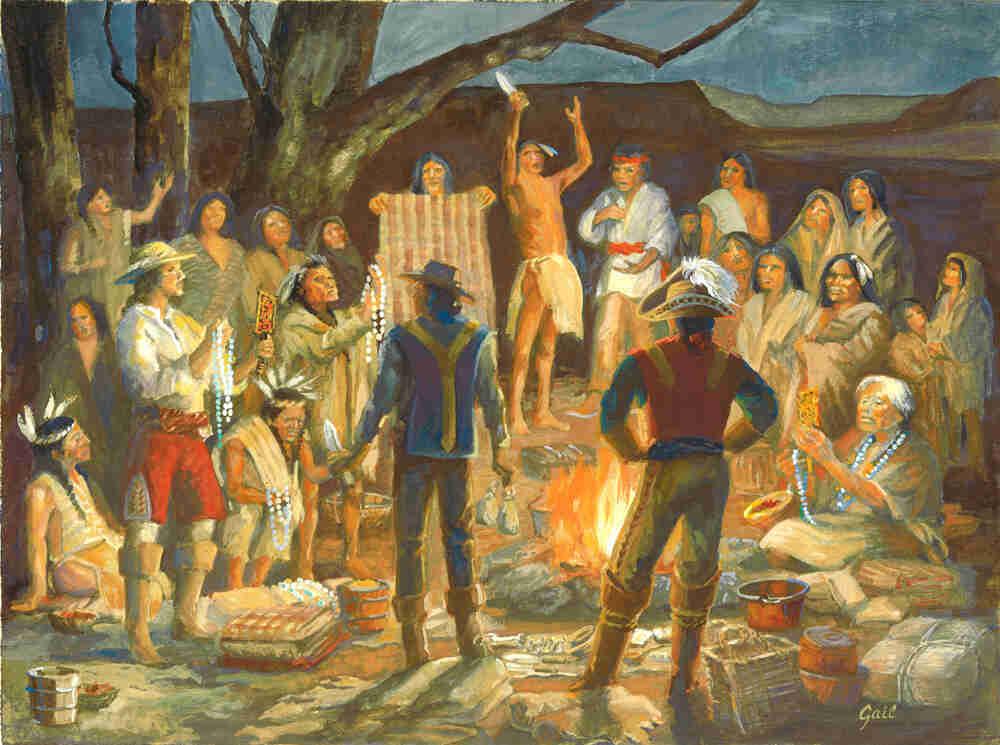Juan Antonio María de Rivera
Full Article
Juan Antonio María de Rivera (1738–?) was a Spaniard and the first Euro-American to intensively explore the territory that eventually became the state of Colorado. In 1765 he made two trips into western Colorado from New Mexico, traveling as far as the Gunnison River in Delta County. Along the way he interacted extensively with Ute- and Paiute-speaking American Indians. His journals are the first detailed descriptions of these peoples. Rivera’s travels have been summarized in the Spanish Exploration of Western Colorado.
The Spanish colony of New Mexico was founded in 1598, and its residents laid the very foundation of Colorado’s history. These peoples’ explorations and interactions with Native Americans characterize the earliest documented accounts of the Centennial State. Until the Mexican War for Independence in 1821, Colorado was part of the extensive Spanish territories governed by the colony.
Family History
Very little is known about Juan Rivera. He is believed to be the Juan Antonio María de Rivera who was baptized in the city of Chihuahua, Mexico, on January 19, 1738, in the presence of his parents, Juan José de Rivera and Josefa Mónica Enríquez, and his godparents. His father was the son of Antonio de Rivera and María Ruiz de Esparza. Lope Ruiz de Esparza, an ancestor of Juan María’s grandmother, had been one of the founders of Aguascalientes, Mexico. Ruiz de Esparza was the family’s point of origin in New Spain.
Rivera’s grandparents, Antonio and María, were living in the mining town of Parral in Chihuahua when their daughter, Isabel (Juan María Antonio’s paternal aunt), was born in 1690. It is thus probable that Rivera had close ties to Parral. His mother, Josefa Mónica Enríquez, was born there in 1707 to José Enríquez and Juana Sáenz de Garfias.
The Sáenz and Enríquez families were among the most prominent in New Mexico before the Pueblo Revolt of 1680 and had all arrived in the colony by the early decades of the seventeenth century. Following their 1680 expulsion from the colony, very few members of these families returned to New Mexico. Among the few who did were members of the Sáenz family. Juan Rivera was twenty-seven years old in 1765 when he traveled to northern New Mexico to lead the expeditions into the Ute territories in present-day western Colorado. When he arrived, he would have found numerous cousins in and around Abiquiú, including Rosalía Sáenz.
In New Mexico
Rivera is suspected to have come to New Mexico from New Spain as part of the retinue of governor Don Tomás Vélez Cachupín, who began his second term as governor in 1762. While he does not appear to have been highly educated or a formally trained engineer, as some writers have indicated, the specific mining terms Rivera used in his journals suggest that he may have had some practical mining experience in New Spain.
Although Rivera has at times been referred to as “Captain” Rivera, there is no evidence that he was a professional military man. The governor, who would certainly have followed current protocols and customs in addressing Rivera, does not refer to him as either “captain” or “don” in his formal instructions to him. The lack of reference to him as “Don Rivera” indicates that Rivera was neither of high birth nor a member of the colony’s more favored elite class.
Expeditions of 1765
During his second term in office, Governor Vélez Cachupín finally succeeded in making peace with the Utes of western Colorado, who gave him permission to search their territory for silver. Cachupín chose Rivera to lead two of these expeditions in 1765, the first in a series of expeditions into western Colorado. The first began in June. Rivera and his men traveled north from Abiquiú, New Mexico, to the Piedra Parada (Standing Rock)—known today as Chimney Rock—near present-day Pagosa Springs, Colorado. From there the party explored southwest Colorado and named several of the region’s rivers, including the Navajo, San Juan, Piedra, Piños (Pine), Florida, Animas, and Dolores Rivers. Near the Animas River they were supposed to meet a Ute man who would show them the way up to silver deposits in the La Plata (San Juan) Mountains; at first the man was nowhere to be found, but the party later met up with him, followed him into the mountains, and conducted an unsuccessful search for silver.
Rivera’s second expedition began in the fall of 1765 with the goal of crossing the Colorado River and investigating rumors of bearded people who supposedly lived on the other side, in the legendary region of Teguayo. It was during this expedition that Rivera left one of the oldest inscriptions in the western United States, carving his name into a cliff face in Roubideau Canyon, southwest of present-day Delta. Rivera exited the canyon and found the Gunnison River, but he never made it to the Colorado—the Utes he met while camping in the Uncompahgre valley told him the route was too dangerous. Rivera made no more entries in his journal once he left the Uncompahgre Valley. His expedition returned to New Mexico in November.
Disappearance from Record
The governor specifically refers to Rivera and the other expedition leaders simply as “citizens and inhabitants of this jurisdiction,” which only means they were residents of the colony in 1765. Although not a native New Mexican, Rivera had deep roots in the colony, at least on his mother’s side of the family. There is no information about how Rivera came to New Mexico or what his fate may have been. While he is known to have still been in the colony in 1766, he simply disappeared from the historical records of New Mexico nearly as fast as he appeared. It is suspected that he probably returned to Mexico City with governor Cachupín when he completed his last term in 1767.







